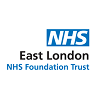How to use Zoom for networking events

It’s been a while since we were able to attend a traditional networking event due to social distancing measures. Thankfully, that didn’t stop us from finding alternative routes to drive conversations and make connections. Whilst unable to host or attend in-person events, online networking events can be an equally powerful tool. The key is that attendees feel they have spent their time well and accessed valuable information and resources.
Zoom has become a go to technology for our online meetups and its wide use means that people are more comfortable using it beyond informal conversations with family and friends. Over the last few months, we hosted a number of online networking events and webinars via Zoom and here are some of our key lessons learnt:
1. Choosing a Zoom meeting vs. a Zoom webinar
You have two options when hosting an online event. The traditional Zoom meeting works very well for an open forum that encourages people to get involved and speak up, and it can be held for up to 100 participants. However, you will need an upgrade as the free personal account only allows group chats for up to 40 minutes. In comparison, the webinar feature, which is a paid add-on, is for more anonymous, large scale events where attendees are there to listen and learn, rather than being actively involved in the conversation. The webinar functionality allows to automate the registration process, with reminders, registration confirmations and follow up emails, which makes the event admin more efficient and organised. Different formats work for different events and audiences, and if in doubt, you can always test both.
Useful tip: A Zoom meeting will not give you a breakdown of all the attendees on a call, so you will need to take a note manually for your post-event follow ups.
2. Getting attendees to sign up and attend
The more personalised your approach and communication methods, the better the results. You don’t need to send handwritten messages, but personalisation of invites and any event-related communication will make a difference. Segment your invitee list based on the reasons why they would want to attend your event, and then link back to these in your invitation. When inviting attendees, keep your message focused on key elements that they care about – the what, then when and the why. Most people attend events with the objective to learn, network or research, so address those objectives in your communication. When sending your invites, don’t be shocked when the majority of invitees don’t respond. Instead, be prepared by allowing yourself enough time for reminders and follow ups. To maximise the effectiveness of the process, schedule a reminder email a week after the first invites and another final reminder just a few days before the event. With the increased urgency people are more likely to respond.
Useful tip: Upon acceptance send out a calendar placeholder to ensure confirmed attendees won’t forget, as calendars can quickly fill up.
3. Driving engagement during the event
If you are running an interactive session, the levels of engagement are what will determine the energy between the attendees and the success of your event. With a webinar format these engagement levels might be lower, but you still want attendees to participate, otherwise they will zoom out very quickly. Start the event with an icebreaker and ask a question that attendees can answer in the chat box. Encourage questions asked, even if you don’t want to answer them during the session – you can always address them at the end of the session during an allocated Q&A. Don’t worry about asking too many questions and running out of time- you can always answer these after the event, and it will give you a good reason to personally follow up with the answers.
Useful tip: If you are worried about silence during the Q&A, prepare a few questions as a back up to get the discussion started.
4. Following up after the event
Follow ups are just as important as the event itself – this is your opportunity to form long term relationships and new business opportunities. Define what are you going to use as a takeaway after the event and use it to get in touch. The idea is to give them something of value that they can repeatedly return to and use – think of a pen that you pick up from a conference stand that you will repeatedly use and be reminded of the logo of the company who sponsored it. In a same way, you need a digital asset that will not only be kept, but hopefully also shared with others. A how-to-guide or a complimentary assessment, but you can also produce a blog with the questions you didn’t answer during the session and share it with attendees.
Useful tip: Communicate how and when will you be following up during the event so that the expectation is set, and attendees understand next steps.
5. Evaluating the event success
There are many indicators that can signal your event success, so it’s important to set your objectives right at the beginning of the planning process. Whether you measure success by numbers of attendees vs. numbers of registrants, the engagement levels or by the number of attendees who stayed online for the entire session, the key is to track the results. This will give you useful insight into what worked, so that you can do more of it next time and understand better what needs to improve. To evaluate the attendees experience and to determine the focus of any future events, it’s a good idea to set up a short survey and ask your attendees directly, so that you don’t have to make assumptions and you can provide the experience that they will enjoy.
Useful tip: If there is not one primary indicator, set up a scale based scoring on various factors and merge them to give you the overall score.
Originally published at https://www.squirrelsandbears.com/blog/case-study-how-to-use-zoom-for-networking-eventsArticles from Petra Smith
View blog
Social listening is the process of monitoring online conversations about a particular brand, person ...

Every business has a story. It’s their story that makes them unique, whether it’s about their people ...

Businesses start because of great ideas. The ones that succeed are those who can sell their great id ...
You may be interested in these jobs
-
Deputy Community Lead OT
Found in: Talent UK C2 - 6 days ago
East London NHS Foundation Trust London, United Kingdom PermanentJob summary · The Newham Occupational Therapy Department are pleased to share an exciting opening to join our community mental health services as the Deputy Lead for community Occupational Therapy, following our current post holder moving on to a new role within ELFT. · Occupati ...
-
Senior Digital Engineer
Found in: Jooble UK O C2 - 1 week ago
Realtime Recruitment Belfast, United KingdomNetwork EngineerDo you thrive in fast-paced environments and have a passion for keeping the digital engine running?We are excited to offer a unique opportunity for talented Network Engineers (L2 to Senior) to join a global fintech leader in Belfast. Our client is a stalwart of th ...
-
Continuing Healthcare Clinical Lead
Found in: Jooble UK O C2 - 6 days ago
Computer Futures Leicester, United KingdomWe are currently on the lookout for a B7 Clinical Lead for one of our clients based on the Midlands. This role will mainly be remote will some onsite work required when necessary. · Clincial Lead - B7 - Continuing Healthcare Inside of IR353 month contract Midlands Hybrid working ...


Comments